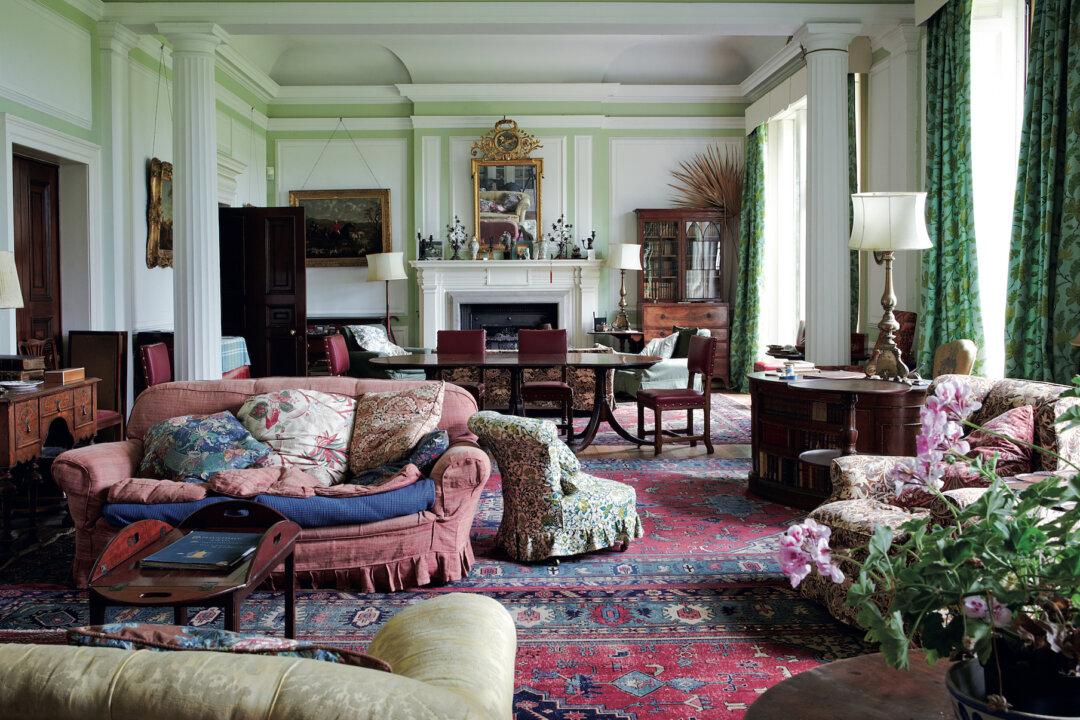Imagine standing in the entryway to the living room of a country cottage—rain streaming down the tiled windows, long drapes flowing to the floor—as a dog snores, curled up on his master’s lap in front of a crackling fire.
Porcelain jugs hold the weight of a dozen plump roses, and a grandfather clock ticks like a heartbeat. These are the images that are conjured in Ros Byam Shaw’s “Perfect English Style: Recipes for Rooms that are Comfortable, Pleasing and Timeless,” a guide on styling rooms that embody elegance, without sacrificing comfort—encapsulating the essence of the English style.




